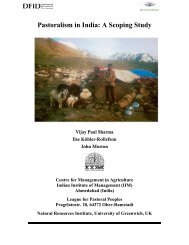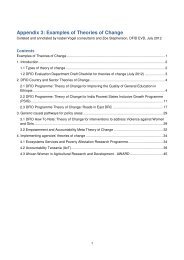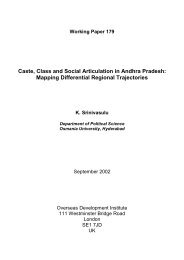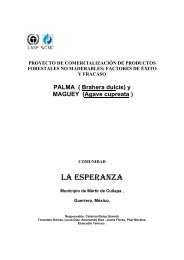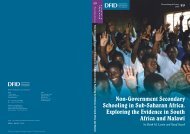Full Report - Research for Development - Department for ...
Full Report - Research for Development - Department for ...
Full Report - Research for Development - Department for ...
You also want an ePaper? Increase the reach of your titles
YUMPU automatically turns print PDFs into web optimized ePapers that Google loves.
Conclusions and recommendations<br />
very little. Only one paper (de Bernis et al., 2000) (+)/(+) looked specifically at the<br />
link between service delivery and maternal mortality and morbidity <strong>for</strong> urban<br />
populations with contrasting health care service provision. This study, from<br />
Senegal, showed that an area where women were more likely to deliver in hospitals<br />
with trained midwives had lower levels of maternal mortality than an area where<br />
most women gave birth in district health centres, usually assisted by TBAs,<br />
implying that access to skilled health care is fundamental. Given that the<br />
distribution of women by socio-economic groups was very similar in both<br />
communities, most of the effect could be attributed to these differentials in<br />
service provision.<br />
Our searches and analyses encountered major problems in identifying ‘poor’<br />
populations. Whilst we took an inclusive strategy and included measures that are<br />
frequently used as proxies <strong>for</strong> ‘poor’ (e.g., material ownership indices), much of<br />
the evidence uncovered by our searches treated terms such as ‘poor’ and ‘poverty’<br />
as unproblematic – especially that produced in the medical literature. There is a<br />
need <strong>for</strong> greater clarity about the definitions used <strong>for</strong> common measures (e.g.,<br />
urban, poor, poverty) in the reporting of interventions in the literature. Without<br />
this clarity, the potential usefulness of high-quality studies <strong>for</strong> understanding what<br />
works to improve the health of the urban poor is greatly reduced.<br />
Secondary analyses of datasets such as the DHS and MICS are widely used in the<br />
study of the urban poor (and many were identified in our initial searches but<br />
excluded from the review). Such datasets represent an important source of<br />
descriptive in<strong>for</strong>mation, but their explanatory power is very limited, even when<br />
data are disaggregated to identify the urban poor in wealth quintiles based on<br />
material ownership. The evidence base, where it does disaggregate and identify<br />
(however loosely) the urban poor, tends to compare and contrast with rural<br />
populations. Whilst this approach is intuitive and relatively easy to operationalise,<br />
especially <strong>for</strong> secondary analyses of large-scale datasets such as the DHS, we need<br />
to remember that ‘the urban health goal is not simply to be better on average than<br />
rural areas. The ambition must be to attain good health <strong>for</strong> all absolutely’ (Dye,<br />
2008, p.768).<br />
What, then, are the methodological issues involved in studying the health of poor<br />
urban people? Our review found few studies <strong>for</strong> inclusion that acknowledged and<br />
studied the urban poor as an individual (highly heterogeneous) group. Many<br />
descriptive studies either compare urban poor with urban non-poor and/or rural<br />
populations. Poor urban settings can introduce methodological issues that make<br />
intervention delivery and evaluation difficult, above and beyond those limitations<br />
that might exist in a LIC setting. However, it is important to remember that poor<br />
urban populations do not just live in slums or in<strong>for</strong>mal settlements. There are many<br />
poor urbanites who do not live within slums. Non-slum dwelling urban poor are just<br />
as ‘invisible’ in the evidence our search produced.<br />
There is a lag between researchers’ (and funders’) intervention research interests,<br />
but also, we would argue, a degree of inertia. Long-term funding <strong>for</strong> non-urban<br />
poor settings that evaluate health interventions make compelling arguments <strong>for</strong><br />
continued funding, in part to protect time series data. Many longitudinal study<br />
sites in more rural settings have made ef<strong>for</strong>ts to capture population movements to<br />
and from urban areas (Collinson and Adazu, 2006). However, the continued<br />
concentration of, <strong>for</strong> example, Demographic Surveillance Sites in LICs and LMCs in<br />
largely rural settings means that data with explanatory power continue to be<br />
absent <strong>for</strong> many urban poor.<br />
What are the effects of different models of delivery <strong>for</strong> improving maternal and infant<br />
health outcomes <strong>for</strong> poor people in urban areas in low income and lower middle income<br />
countries? 56



